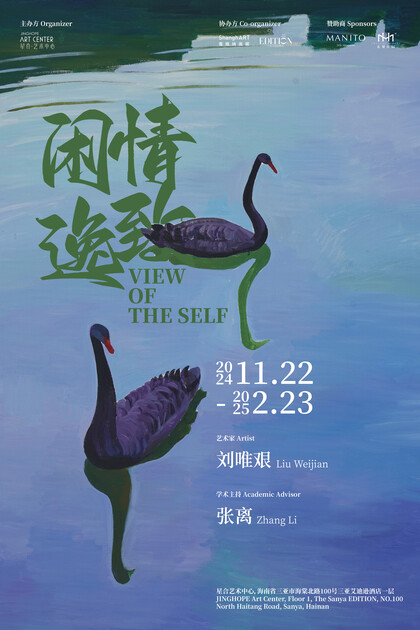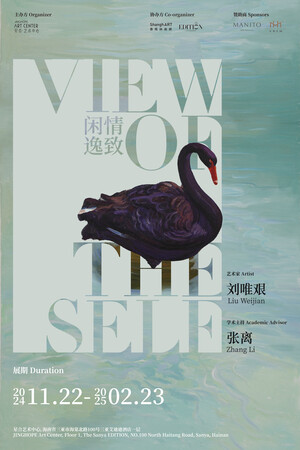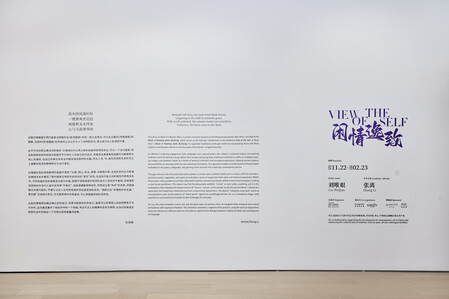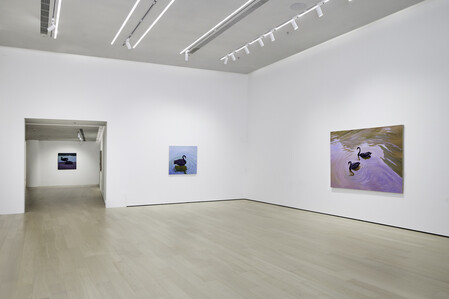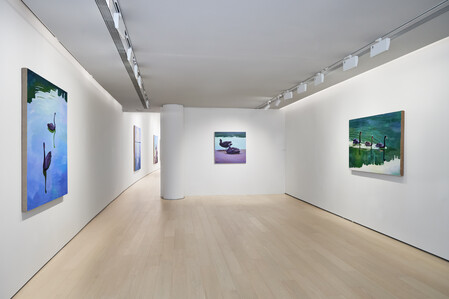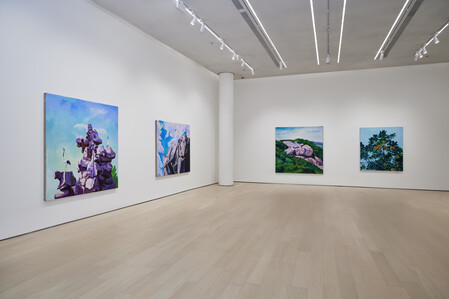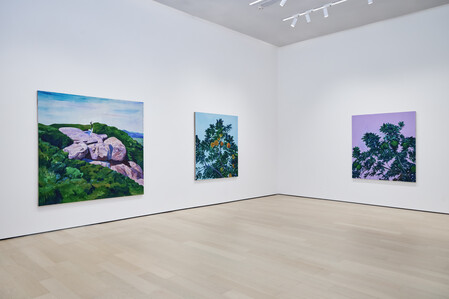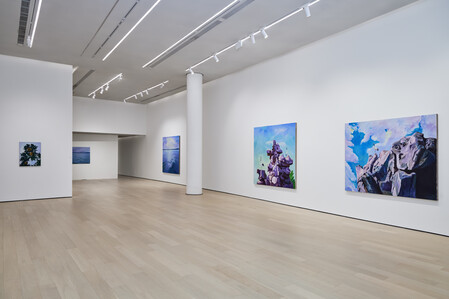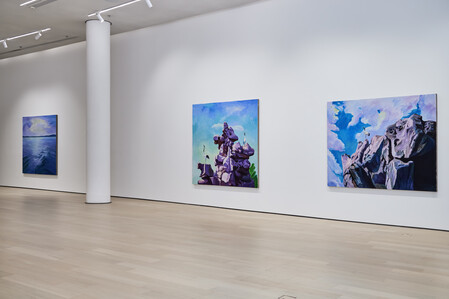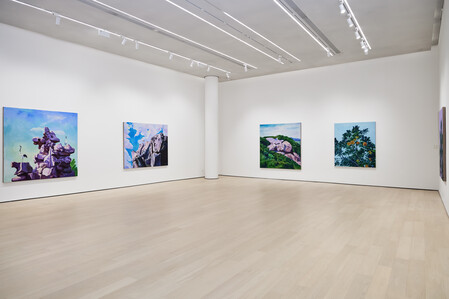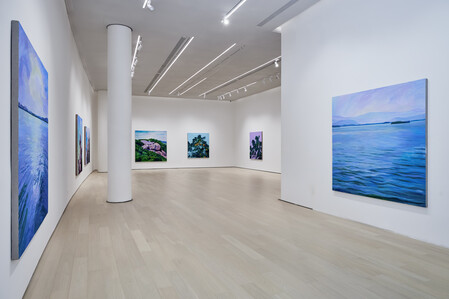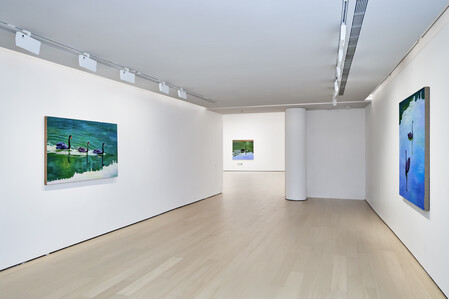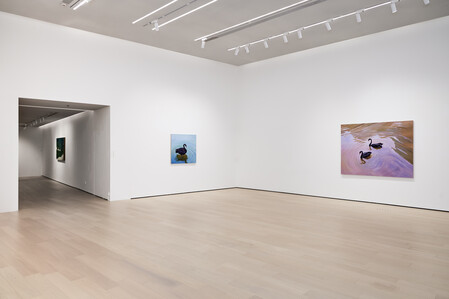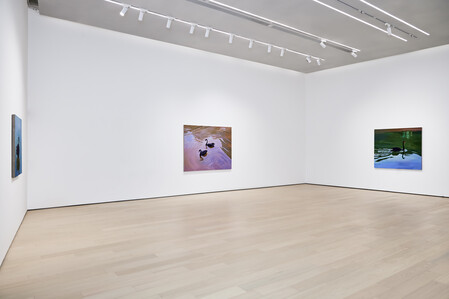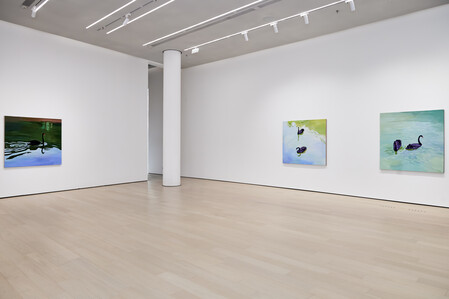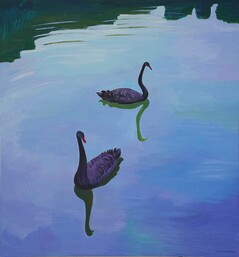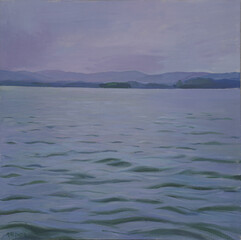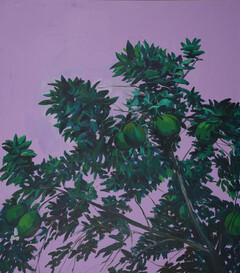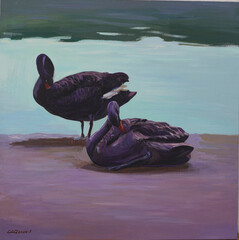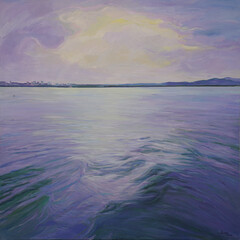Solo Exhibition JingHope Art Center, Sanya
Liu Weijian solo exhibition:
"View of the Self"
This exhibition is academically hosted by Zhang Li which presents a total of 17 works by the artist.
The exhibition will last until February 23, 2025.
Beneath tall trees, the west wind sheds leaves;
Lingering in the chill of autumn's grace.
With scroll unfurled, the autumn waters yet unwritten;
Unknown, the heart soars to the skies.
This verse, to which Liu Weijian refers, is a seven-character quatrain by the Ming dynasty painter Shen Zhou, inscribed in his Album of Roaming while Reclining, which serves as the thematic introduction to the exhibition View of the Self. In Shen Zhou’s Album of Roaming while Reclining, he expanded traditional landscape motifs by incorporating fauna and floral subjects, inviting these elements into the scope of the literati’s imagined journey.
Liu Weijian’s enduring engagement with calligraphy and classical poetry also reflects a sustained inquiry into painting traditions since the Northern Song. Rather than merely replicating these traditional methods or motifs, Liu employs classical imagery and aesthetic values as a means of spiritual cultivation and conceptual exploration, allowing ancient subjects and sensibilities to converge within his own expressive framework. This approach enables a transformation of the principles embedded in the poetry, calligraphy, and painting of the ancients into a distinctly contemporary lexicon.
Through a vibrant and richly saturated colour palette, Liu draws upon symbolic motifs such as cranes, artificial mountains, autumnal waters, vegetables, and swans to articulate a sense of suspension from daily and historical experience. Within these works, colour gradients are finely calibrated to express a harmonious tension without recourse to tonal greys, creating a vivid visual equilibrium. The viewer may find the pleasurable aesthetic “unreal” or even subtly unsettling, yet it is this ambivalence that embodies the deeper essence of “leisure.” Leisure, in this context, recalls the ancient literati’s retreat as a space born not simply from refinement but from a melancholic detachment. The ideal of “riding the crane back” points to transcendence, even as the presence of “black swans” signals the unsettlingly familiar. Art, as a conceptual refuge, holds space for an unconventional multiplicity that challenges the everyday.
For Liu, the crane embodies a prior self, and the black swan, his present; thus, he navigates these temporal and cultural dichotomies with expressive freedom. This exhibition assembles a segment of his practice, using the spiritual dispositions of ancient literati as a reference point to articulate an experimental dialogue between traditional ideals and contemporary art language.
Article/Zhang Li
More Pictures:

